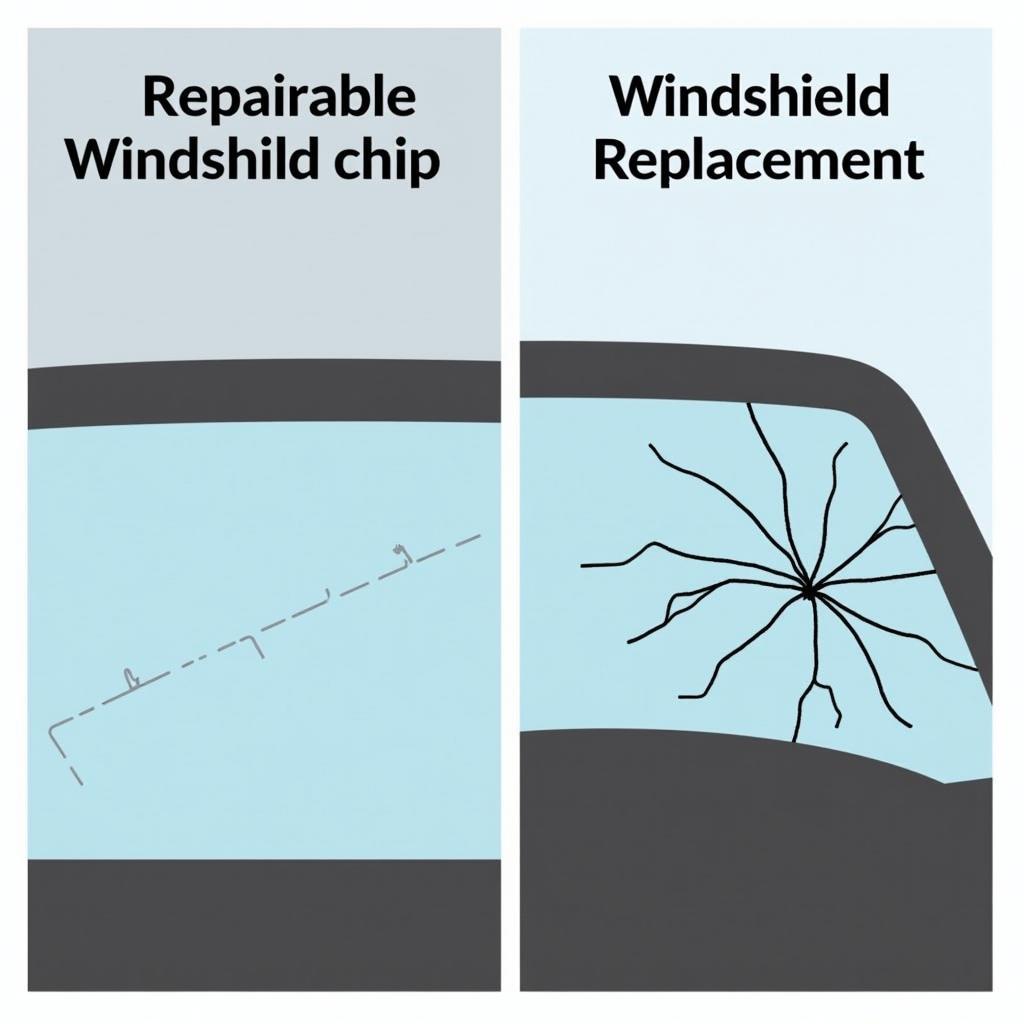A chipped car window can be an unwelcome surprise, often resulting from flying debris on the road. While a minor chip might seem like a small issue, it’s crucial to address it promptly. Ignoring a chipped windshield can lead to more extensive damage, compromising your safety and leading to costlier repairs down the line. This comprehensive guide will delve into everything you need to know about chipped car window repair.
Understanding Chipped Windshield Damage
Types of Chips
Not all chips are created equal. Understanding the type of chip you have is crucial for determining the best course of action. Common types include:
- Bullseye: A circular chip with a cone-shaped impact point.
- Star Break: Resembling a star, this chip has cracks radiating from the impact point.
- Combination Break: As the name suggests, this involves characteristics of both bullseye and star break chips.
- Stress Crack: These cracks often appear seemingly out of nowhere and are caused by temperature fluctuations.
Why Immediate Repair is Crucial
A small chip can quickly escalate into a large crack due to:
- Vibrations: Constant road vibrations weaken the glass around the chip.
- Temperature Changes: Extreme heat or cold can cause the chip to expand and contract, worsening the damage.
- Pressure Changes: Even slamming your car door can put enough pressure on a weakened windshield to cause the chip to spread.
Chipped Car Window Repair Options
The good news is that minor chips are often repairable, saving you the cost of a full windshield replacement.
Windshield Repair Resin
This process involves injecting a special resin into the chip. The resin is then cured with UV light, restoring the structural integrity of the glass and improving the chip’s appearance.
When is Windshield Replacement Necessary?
While repair is often possible, certain situations might necessitate a full windshield replacement:
- Large or complex cracks.
- Chips directly in the driver’s line of sight.
- Damage to the windshield’s inner layer.
 Car Windshield Repair vs. Replacement
Car Windshield Repair vs. Replacement
Choosing a Qualified Technician
Selecting a reputable and experienced technician is crucial for a successful repair. Look for certifications like those from the Auto Glass Safety Council (AGSC). Don’t hesitate to ask about their experience and repair process.
Preventing Future Chips
While not all chips are preventable, you can minimize the risk by:
- Maintaining a safe following distance.
- Driving cautiously on gravel roads.
- Repairing any chips promptly.
“Prevention is key when it comes to windshield damage,” says John Smith, a veteran automotive glass expert with over 20 years of experience. “Addressing a small chip early on can save you from the hassle and expense of a full replacement later.”
Conclusion
A chipped car window might seem like a minor inconvenience, but it’s crucial to take prompt action. By understanding the types of chips, the importance of timely repair, and how to choose a qualified technician, you can keep your windshield in top condition, ensuring your safety on the road.
FAQs about Chipped Car Window Repair
1. How long does a windshield repair take?
Most chip repairs can be completed within 30-60 minutes.
2. Will the repair be noticeable?
While a properly executed repair will be less visible, it might not completely disappear.
3. Does insurance cover chipped car window repair?
Many insurance policies cover windshield repair without a deductible, so it’s always best to check with your provider.
4. Can I still drive my car with a chipped windshield?
Yes, but it’s advisable to get it repaired as soon as possible to prevent further damage.
5. How much does chipped car window repair cost?
The cost varies depending on the severity and type of chip, but it’s generally much less expensive than a full windshield replacement.
Need help with a chipped car window? Contact us via WhatsApp: +1(641)206-8880 or Email: [email protected]. Our team is available 24/7 to assist you.

